Michigan Brothers Discover A 220-Year-Old Treasure On Oak Island
In Nova Scotia, Canada, Oak Island may not appear to be special to casual visitors, but as you delve a little further, you’ll soon discover that it’s been the subject of several books, has piqued the interest of significant historical figures over the years, and has been the subject of innumerable documentaries. This is because Oak Island has been the core of a treasure hunt for nearly two hundred years. The mysterious “Money Pit” has been linked to notable and sometimes controversial figures such as Marie Antoinette, Shakespeare, Captain Kidd, Franklin D. Roosevelt, and many more. For years to come, it has offered generations of treasure excavators an abundance of speculations and theories about its bottomless pit of treasure discoveries.
Brothers On a Quest
Brothers Rick and Marty Lagina didn’t hesitate to spend their hard-earned money to buy half of the Oak Island Tour company, and that included land on the island and the rights to any treasure discovered there. They were ready to spend their lives uncovering buried treasure in what is now called The Money Pit.
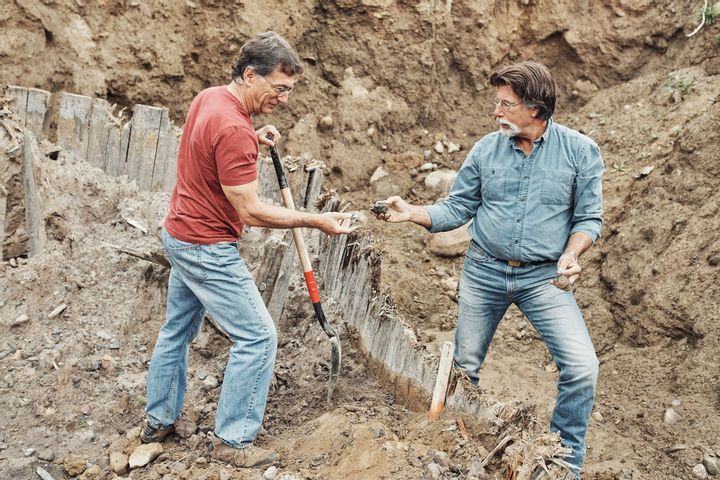
After years of hard work and a lot of elbow grease, the brothers made significant discoveries that might just unlock the mystery of Oak Island. Let’s embark on a journey with these brothers and find out what new insights they offer.
The Real Curse of Oak Island
Any treasure-hunting enthusiast can tell you about the mysteries surrounding the island. According to folklore, seven individuals must die before the island’s riches may be discovered. Six people had already died in the pursuit of finding treasure over nearly a century.
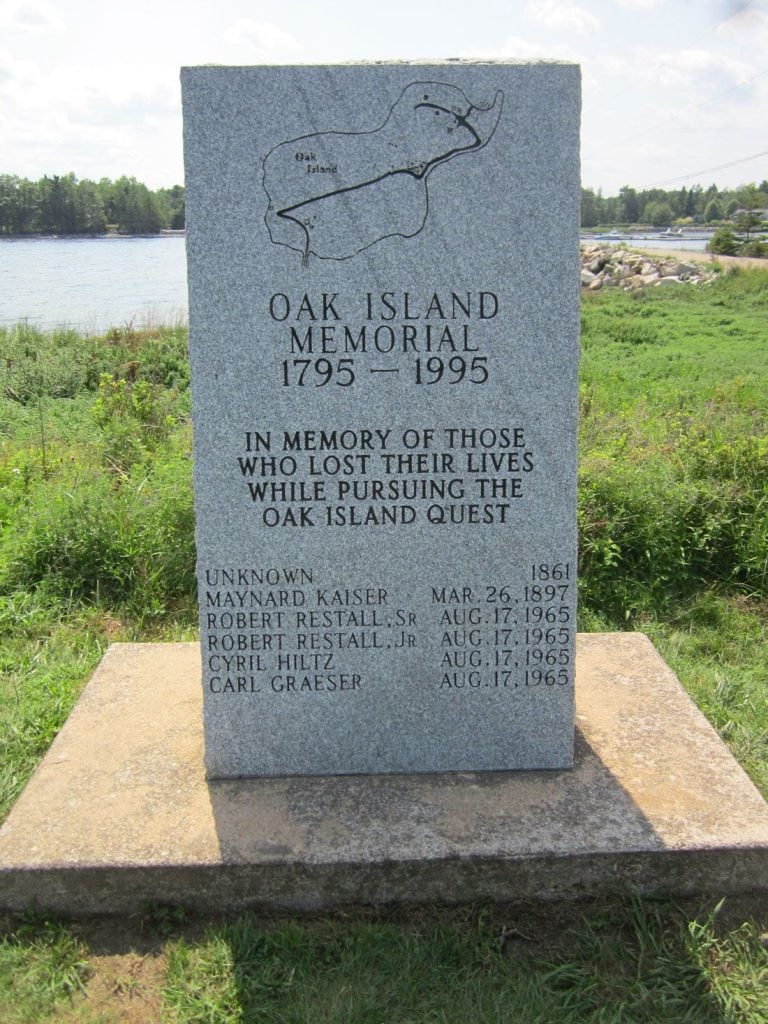
Even though some small sums of coins have been unearthed, many people feel a larger prize is waiting to be discovered. However, the question remains: are seven lives worth the price? These brothers were willing to find out.
It Was Well Worth The Wait
After years of digging in the Money Pit, the Lagina brothers made their first significant discovery. They unearthed a Spanish copper coin estimated to date back to the 17th century. This signified that there could be more coins buried nearby.
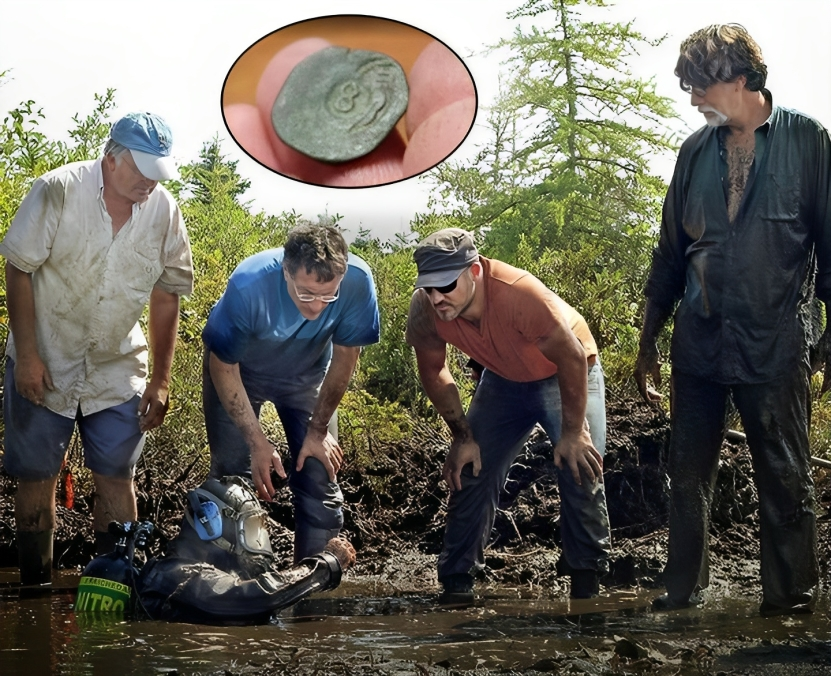
What if there is a whole stash of Spanish Doubloons hidden somewhere? This piqued their curiosity, increasing their drive to keep searching in hopes of discovering more items of significant value. However, their endeavors would be fruitless for two seasons.
The Roman Sword Discovery
Fast-forward to season three of the show, the brothers drained a massive pit and discovered several ancient relics inside, including Portuguese carvings. In one of the episodes, an excavator handed them what appeared to be a Roman sword, which, if authenticated…
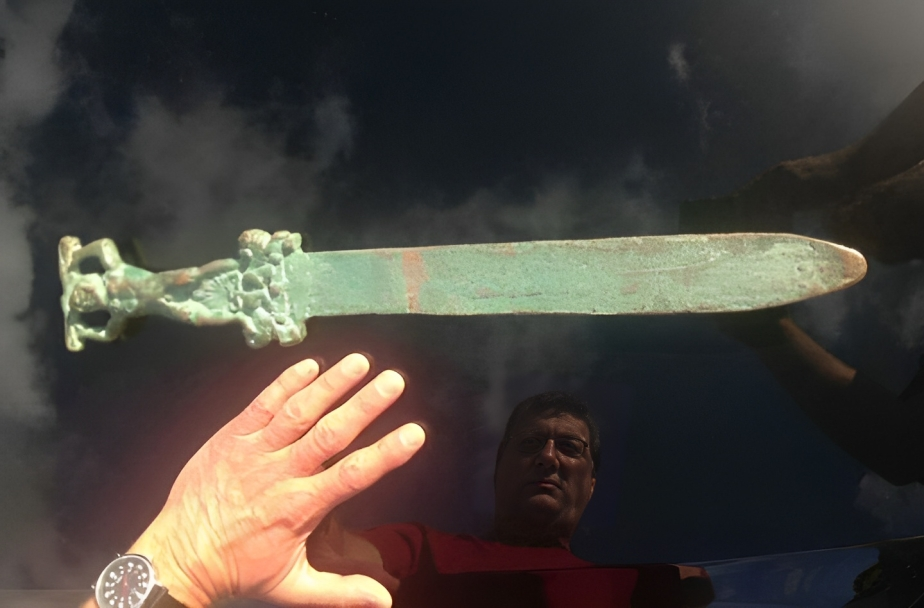
…would prove that Romans landed on American soil earlier than believed – and that the treasure beneath the grounds of Oak Island could be much older and far more priceless compared to what people assumed before. It was indeed a significant find.
The Interesting Revelations From The Map
A very intriguing guest made their debut on the show, and it was none other than Zena Halpern, author of The Templar Mission to Oak Island and Beyond: Search for Ancient Secrets: The Shocking Revelations of a 12th Century Manuscript.
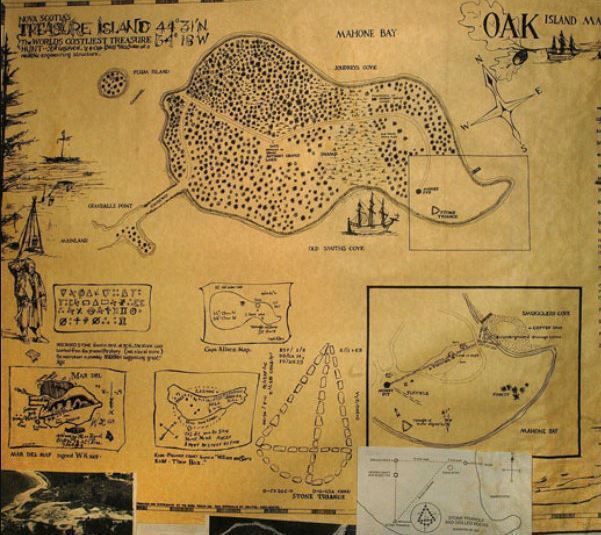
In her book, Halpern discusses her theory about the Templar’s presence on the island and gives proof in a meticulously made replica of a 1647 French map. It can be noted that the words “anchor,” “hatch,” and “valve” were printed on this chart.
The Revelation of The Shaft
Marty and Rick demonstrated that early excavators built a wood-lined shaft in the pit by using modern advanced technology. According to the two brothers, it was built in 1805 by the men who first found the Money Pit and attempted to dig it – and its treasure – up.
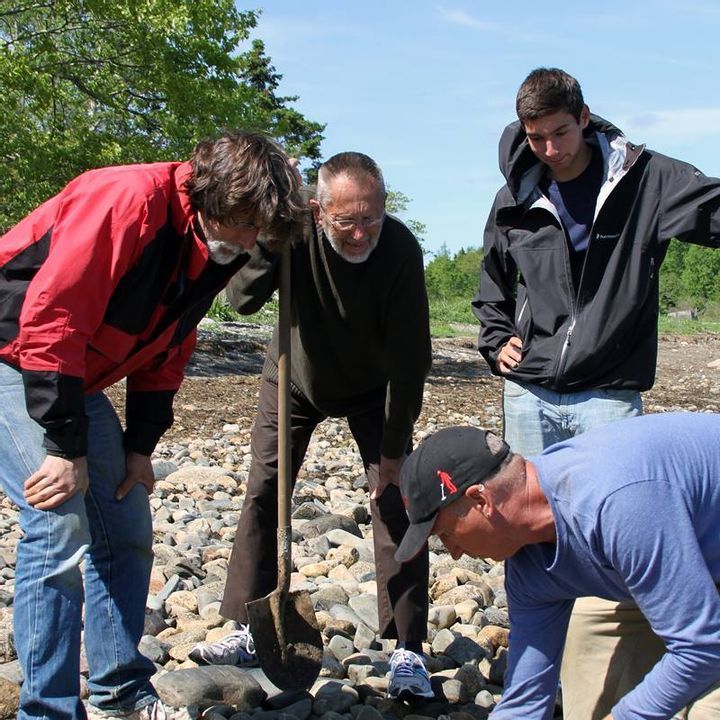
One of the most interesting finds by the excavation team was a tiny piece of material, most likely to be a piece of a book – possibly from a binder. What sort of manuscript did this piece of cloth bind, and what significance did it have to the treasure rumored to be hidden beneath the island? It wasn’t clear, but Rick thought it was an integral part of the island’s mystery.
A Parchment of Great Significance
Shortly after discovering the bookbinder, the team found a piece of parchment made of animal skin with markings resembling a medieval manuscript’s text. The brothers theorize that this piece of parchment is linked to a series of interactions between…

…William Chappell and Frederick Blair that commenced around 1897. The duo were late-nineteenth-century treasure hunters. The parchment proved to be an invaluable resource as it could possibly map out the details of the exact location of the treasure.
Legend of The Money Pit
So, how did the legend of the Money Pit come to be? The Truro Company drilled into numerous chests full of gold coins but, for some reason, could not retrieve them. As a result, a big hole in the ground was made that was christened the Money Pit.
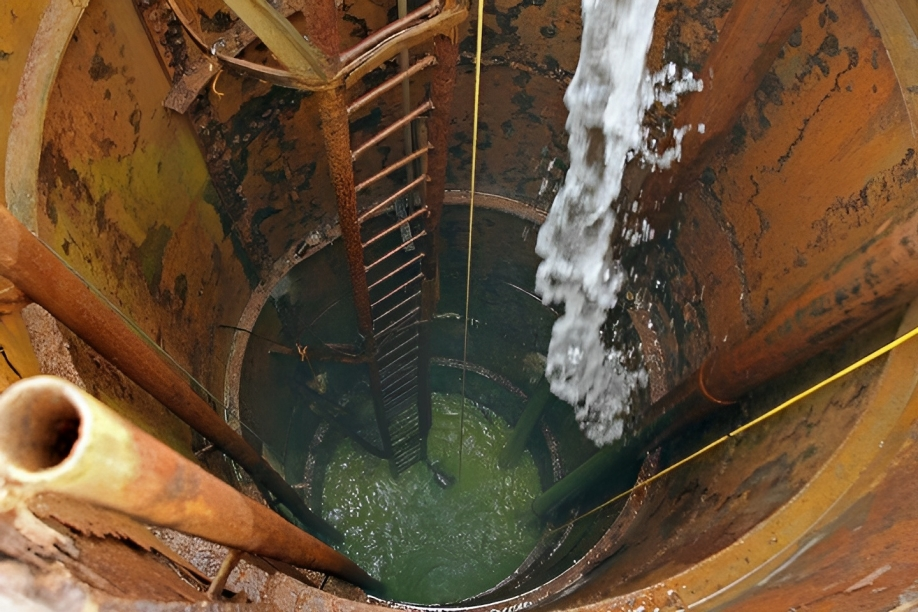
Over time, the hole was filled with water, which the Oak Island Association tried to drain, but they were unsuccessful. During one of these attempts, one person tragically lost their life, the first of many associated with the island and its legends.
A Significant Investment
The Lagina brothers decided to make their treasure-hunting passion a full-time job in 2006. Following extensive research into the Oak Island legend and several expeditions to the island and its most well-known Money Pit, the brothers…

…decided to buy half of the Oak Island Tour company, and that included land on the island and the rights to any treasure discovered there. The other half of the rights remained in the Blankenship Clan’s hands.
Exceptional Discoveries
Marty believes they have shown that something noteworthy and exceptional happened on the island many years ago. He says, “The evidence suggests that something strange happened on this island before 1795.” Based on his discoveries, it is likely to be true.
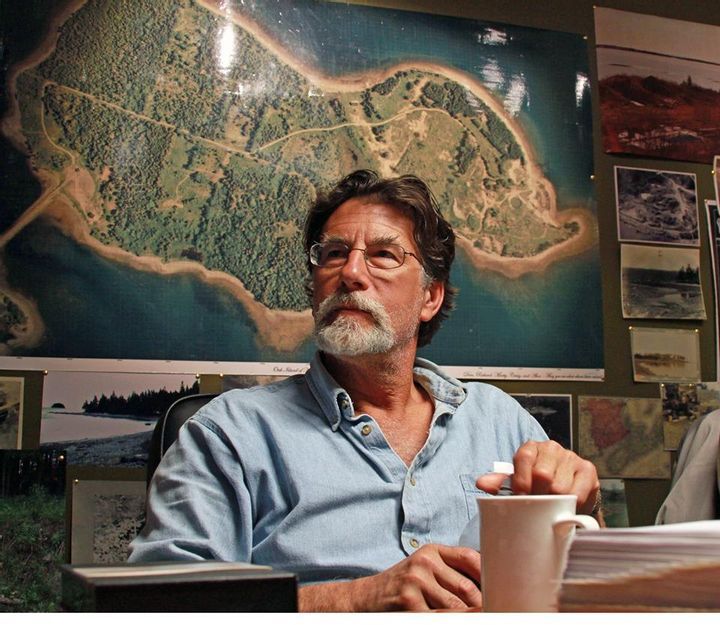
“Something happened here before 1795 and much earlier, at least 100 years.” Was it simply buried gold… or something worth more than that? Who put it there, and what were their reasons for doing so? They were desperate to find the answers.
Three Teenagers Started It All
As the story goes, everything started when three teenagers were out on a fishing trip and discovered a depression in the ground after coming ashore to restock on supplies. Upon further investigation, they noticed that part of the ground was considerably looser than the surrounding land.

Daniel McGinnis had heard a rumor that a sailor from the crew of the notorious Scottish pirate Captain Kidd had buried a treasure worth more than £2 million from his lootings somewhere in the vicinity, and he thought he and his friends, Anthony Vaughn and John Smith, had found it.
The Mysterious Stone
After a few years, the Onslow Company tried to finish what the teenagers had started. They ran into a few problems and even caused a flood with their efforts but were rewarded when they came across a large stone inscribed with symbols.
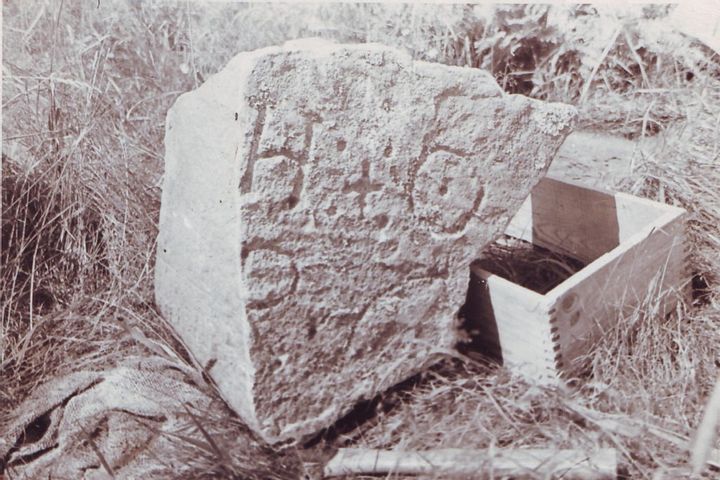
It took a long time before anyone could translate what was on the stone. According to a professor, the message reads, Forty feet below, two million pounds lie buried.” Many believe it is the location of a buried treasure, prompting researchers to drill into the ground in the hopes of finding something significant.
Theories Surrounding The Pit
Numerous hypotheses and speculations abound as to what the treasure might be. Some say it contains Marie Antoinette’s jewels, while others believe it includes manuscripts proving Francis Bacon was the actual author of William Shakespeare’s works. Over the years, the pit has also revealed astonishing findings. Researchers, adventurers, and historians have visited the Oak Islands for nearly two centuries, curious about what lurks beneath the surface.

A man named William Chappell was one of the island’s most notable researchers. Following a newspaper story on the issue, Chappell became involved in the Oak Island excavations in the late 1920s. He came to Canada to dig and see what he could uncover.
Researcher at Oak Island
While in Canada, William Chappel discovered an axe, a fluke anchor, and a pick in his digs, tools that led him to conclude that someone dug this place before in ancient times. When Chapell’s efforts and funding ran out, American industrialists took over the dig.
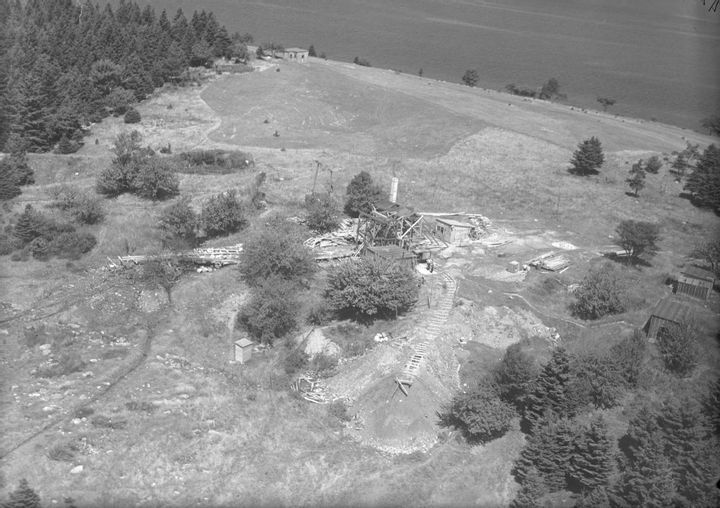
Gilbert Hedden was the industrialist who took over the Money Pit’s digging efforts. Using the resources of his own company, Bethlehem Steel, he took over the treasure hunt operations on the island. Hedden brought forth some new information.
The Axe of the Ancient Acadians
A fluke anchor discovered on the tunnel was one of William Chappell’s most significant findings, as was an instrument that seemed to be a 250-year-old Acadian axe. Parts of an oil light and a miner’s pick were other important discoveries.

The question of how these relics arrived on the secluded island and why they were all buried in about the exact location remains unsolved, but it just adds to those who believe there’s more to the island than you could fathom.
The Motive for Hiding The Treasure
The vast number of wars and conflicts that occurred around the time the island was discovered is one of the most compelling reasons researchers believe there is treasure hidden on Oak Island. At that time, people tended to flee from wars, seeking safety in unusual and remote places.
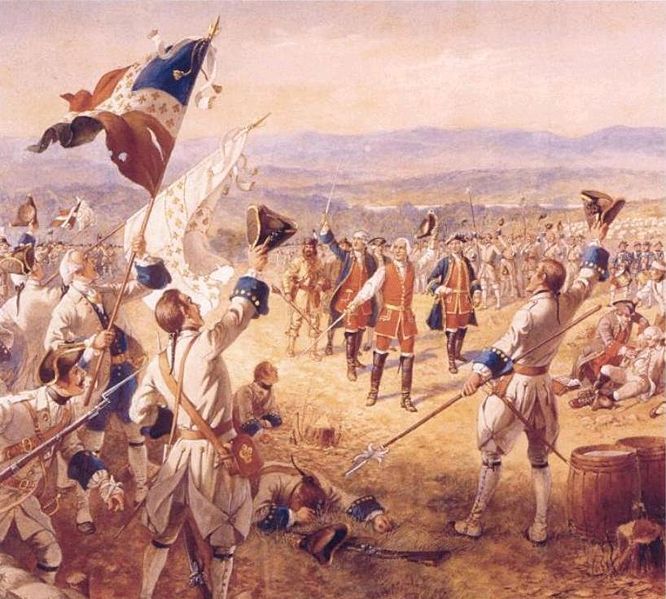
Even today, Oak Island is about as distant as one can get from Europe’s long and terrible battles – thus, if someone wanted to hide their wealth away from the risks of war and had the means to travel afar, Oak Island would have been a perfect site.
Sailors and Pirates
Another set of historical conditions that makes Oak Island a desirable spot for burying treasure is pirates. They traveled towards the enigmatic Oak Island between 1690 and 1730, and historians referred to this perios as the “Golden Age of Piracy.”

Aside from being a “goldmine” for natural resources and a secure haven for pirates to stock up on wood, water, and other essential supplies away from major naval powers, the island was also an excellent site for hiding their loot and valuables. Many people thought the pirates might have dumped their loot on the island, but one treasure seeker’s findings, in particular, may startle you.
The Bone of a Man
One of Rick and Marty’s most notable discoveries was a human bone that belonged to a person of Middle Eastern lineage! The brothers struggled to understand how a person from the Middle East could have arrived on Oak Island…

…let alone be buried there. The discovery resulted in more questions than it answered. However, Marty expressed his delight and, as a result, considered a possible association with the Knights Templar. Marty was confident that their recent findings were significant.
Are The Lagina Brothers Able to Provide Answers?
Although one family perished while attempting to solve the enigma of Oak Island, another family picked up the mantle and appeared to have had some success. The brothers Marty and Rick Lagina have dedicated their entire lives to solving the puzzle of Oak Island and unlocking its hidden mysteries.
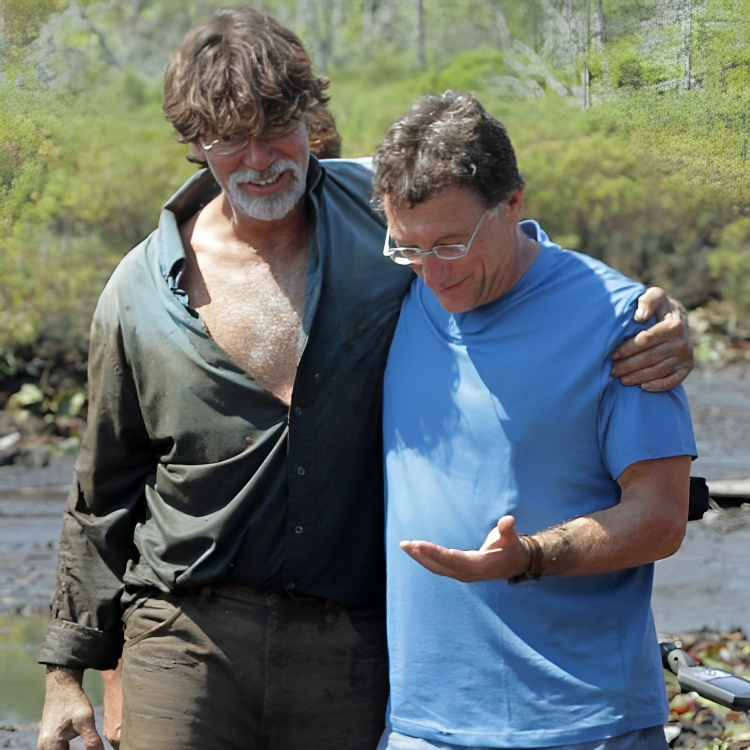
While they have spent many years attempting to unravel the island’s mysteries with little success, their most recent quest has yielded some results. The Lagina brothers have made significant discoveries on Oak Island in recent years, which some believe have opened a new door to unearthing the island’s secrets.
Born to Explore
The ambition of the Lagina brothers to learn the truth about Oak Island’s fortunes dates back to when they were still young. Rick and Marty have been fascinated by the concept of exploring and treasure hunting ever since they were children.

Rick had made his first find when he was just ten years old, and after that, he was fixated on pursuing a career in exploration and started to build himself up with that one objective in mind. They set off on the adventure together.
Gary Drayton’s Contributions
Gary Drayton, a metal-detecting expert and author of several treasure-hunting books, was one person who added a lot of much-needed expertise to the Lagina brothers’ pursuit of the Oak Island treasure. Drayton is a skilled treasure hunter specializing in…
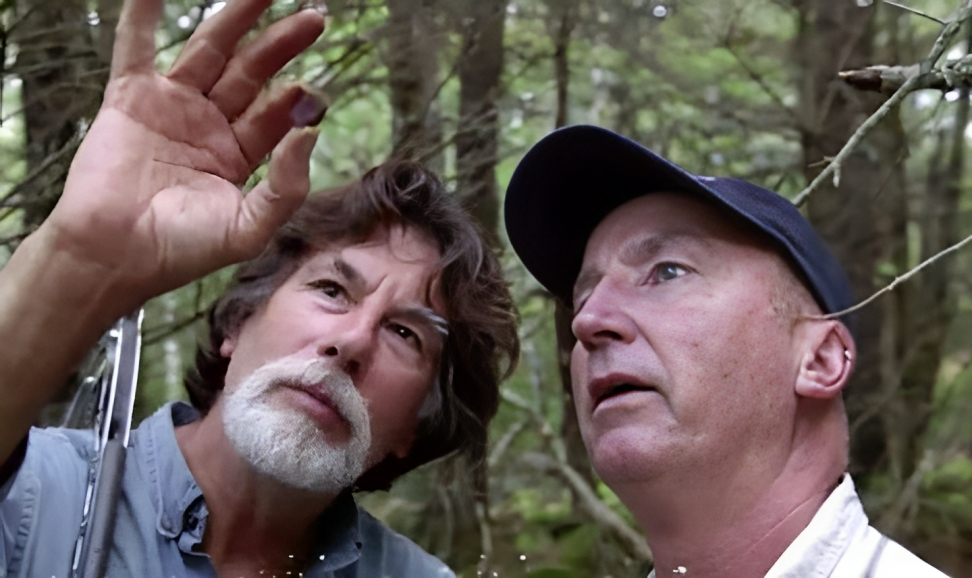
…metal detection and his years of experience were a tremendous help to them. Gary and the Lagina brothers worked in Smith’s Cove near the end of Season Five of The Curse of Oak Island when they came across something truly astonishing.
It Goes Deeper
Following additional excavations and mapping, they discovered that the “Money Pit” was significantly more profound than anyone anticipated. They tried to drain the water, but as they did so, they noticed something very peculiar. The water was pouring into the pit.
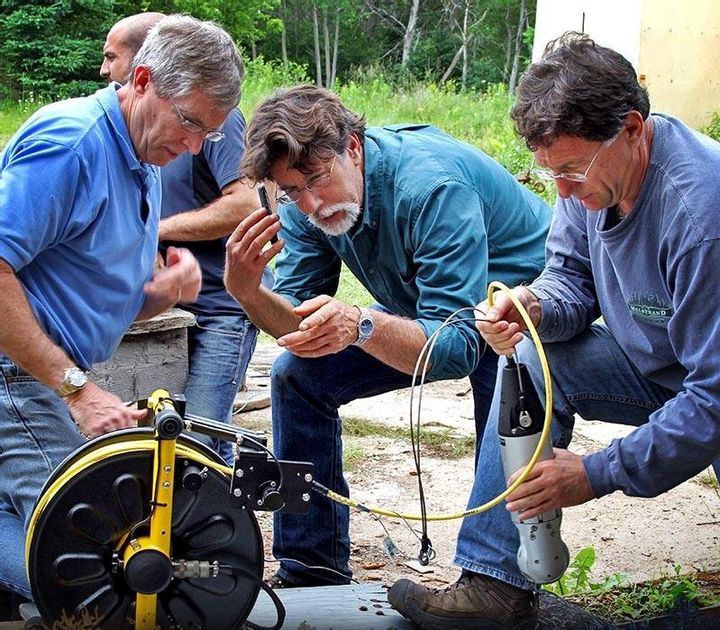
This water started to re-fill it up as they attempted to drain it. The brothers soon cracked out the case and found that the water was coming in from a nearby beach. Is it possible that the pit has been flooded all this time, leaving the treasure submerged in seawater?
Cross from the Middle Ages
Rick, Marty, and Gary discovered a lead cross with a square hole at the top. This cross was assumed to be dated between the years 1200 and 1600, proving it medieval in provenance – implying that it was fashioned before….

…Christopher Columbus’ official discovery of America. How did a medieval cross end up in pre-Columbian America, and who were the people who brought it there? Could Oak Island hold the key to changing the course and our understanding of American history?
Knights Templar and Oak Island
The Knights Templar has been associated with Oak Island because historical sources reveal they wanted to bury precious items in the island’s Money Pit. The Order of the Knights Templar was a vast Catholic Christian organization with members from different countries.
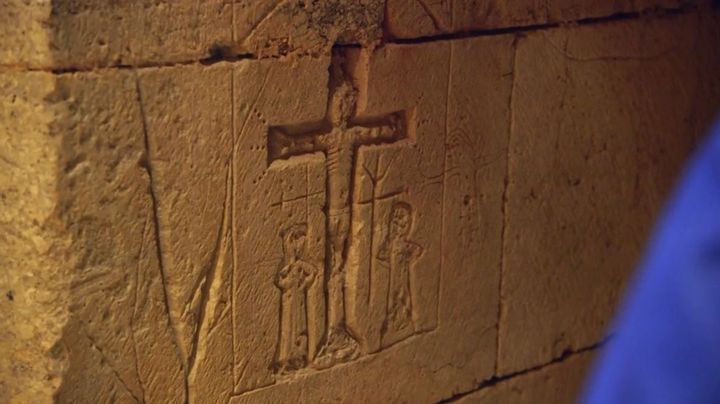
The Order of the Knights Templar was created in 1119 by the Pope of that era. The Templars wielded enormous financial and political power throughout Europe and the Middle East, but they were also rather mysterious, prone to covert rites and religious practices.
The History of the Cross
Historian Zena Halpern does not subscribe to the pervading belief that the lead cross has ties to the Knights Templar. The cross could represent the Phoenician goddess Tanit rather than an actual cross. She says that the Templars may have discreetly worshipped Tanit, somewhat similar to the earlier belief that the Templars were occult demon worshippers.

Another explanation is more pragmatic. The scientists hypothesized that chunks of lead were used to smuggle gold, such as those seen in crosses. Gold and lead are both similarly heavy metals. Thus, gold wrapped in inexpensive lead can be smuggled without being suspected by robbers and pirates. Could the crosses have been used to smuggle gold?
Stone of Magnificence
The valuable rhodolite garnet was perhaps the most significant find made by the Lagina Brothers. According to their estimates, this stone could be between 400 and 500 years old. Rhodolite stones have a lovely purple-raspberry hue to them. However, the most remarkable aspect of this gem is that it is most likely to be found in Africa.

While there are other rhodolite garnet resources worldwide, including Norway, Sri Lanka, India, and North America, rhodolite garnets dated like the one discovered by the brothers were most likely mined in Africa. Did ships have made their way from Africa to Oak Island across the Atlantic?
The Origin of the Stone
According to Gary Drayton, this Rhodolite stone could be roughly 500 years old and possibly linked to the legend of Marie Antoinette’s gems. Furthermore, such stones have also been used in religious ceremonies by both Egyptians and Romans.

How did such a valuable and rare jewel end up in a marshy pit in Nova Scotia? Is it possible that more rare objects will likely be discovered in the Money Pit? With each discovery, the brothers knew they could not give up.
The Firm Belief
There have been several attempts to uncover the treasure concealed somewhere beneath the grounds of Oak Island for nearly two centuries. The Holy Grail, Shakespeare’s works, and Captain Kidd’s loots were all theories associated with this search. Every historical conspiracy theory imaginable appears to…
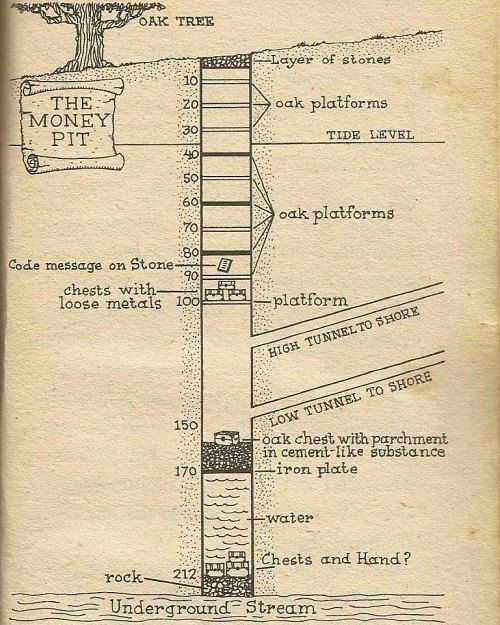
…have been linked to Oak Island at one point or another. Despite the rumors, treasure hunters universally acknowledge and agree upon one thing. This belief keeps the Lagina brothers and their team going: there is a money pit that most certainly contains something invaluable.
Francis Drake’s Capabilities
According to the Lagina Brothers, Francis Drake possessed the knowledge, talents, and unique engineering personnel to build the money pit. Drake’s mastery of coastal mining puts him in a favorable position, as his team can dig beneath the seabed.

Drake was a notorious pirate and would have had ample cause to hide treasure in an inaccessible location. He had amassed large sums of loot over the years, and while some of it was taxed and went to the royal treasuries, it wouldn’t be unreasonable to believe he had buried a personal stockpile.
The Log
One of the Lagina Brothers’ coworkers, Doug Crowell, discovered six-pager ship logs. “It has been agreed that a deep pit is constructed, and wealth is safely hidden,” the text says in one log entry, and “The pit to have a…
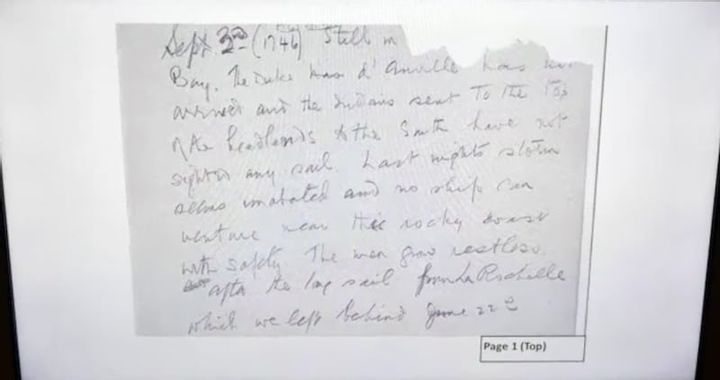
concealed entrance by a tunnel from the coast.” The Lagina Brothers’ interest was immediately sparked after reading this. Is it possible that the tunnel that keeps the pit wet is identical to what these ship logs mention? They needed to know.
When Hard Work is Rewarded
It might be difficult and discouraging to continue digging and not find anything more often than not. The Lagina Brothers take their workers out every now and then to gaze at the abundance of treasure they’ve previously discovered as a…
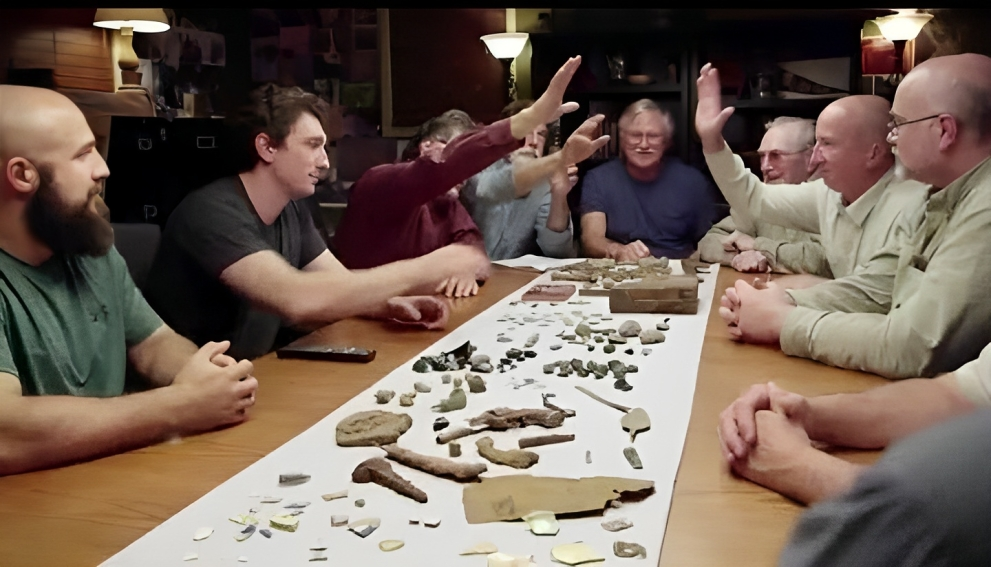
reminder to continue in their endeavors. There’s always a reason to rejoice, especially when all of your hard work pays off. The Lagina brothers and their committed team look back with pride on their recent discoveries in this photo.
Franklin D. Roosevelt’s Fascination
As a young man, Franklin Delano Roosevelt was fascinated by the mystery of Oak Island. Roosevelt joined Captain Henry L. Bowdoin on an expedition organized by the Old Gold Salvage Group in August 1909. The team had come prepared with divers and specialized excavation equipment.
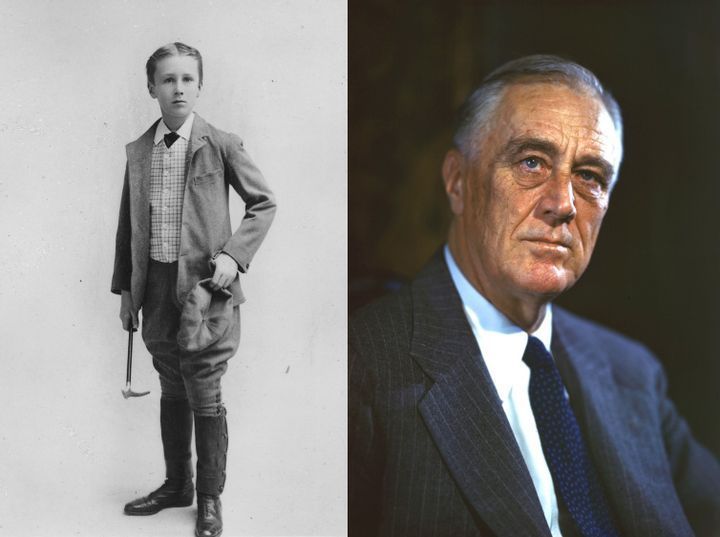
Unfortunately, their efforts were in vain. Despite their failure, Roosevelt remained interested in Oak Island for the rest of his life, keeping up with the latest findings and stories about the treasure search there even after becoming the President of the United States.
The Tragedy of the Restall Family
The worst moment in Oak Island’s history happened in 1965. After signing a contract with one of the island’s property owners, Robert Restall arrived with his 18-year-old son and colleague Karle Graeser and decided to bore a shaft down to a depth of 27 feet.

Robert Restall, who was exploring the shaft alone on August 17, was overtaken by hydrogen sulfide gases. His son followed him in the attempt to rescue him but also ended up losing consciousness. To save the two, Graeser and two more workers also plunged in.
The Brave Squad
The Lagina brothers would not have been able to complete their quest without the help of their companions, Dan and David Blankenship, as well as Craig Tester. They’ve assembled a team of brave, experienced individuals to work together for a common goal.
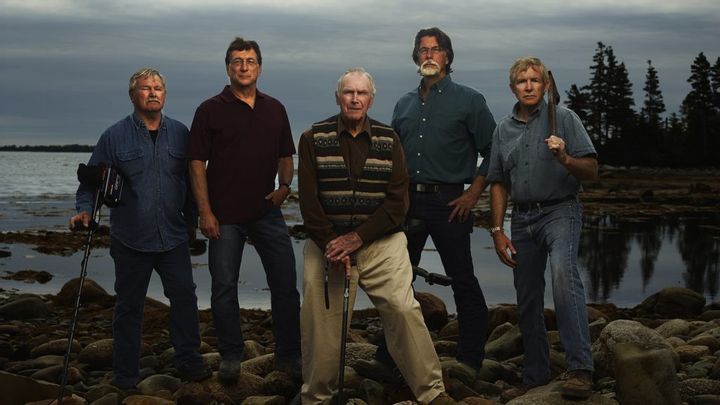
The team helped them to take their excavation endeavors to the next level. Finally, after nearly two centuries of excavations, it appears that the Lagina Brothers and their team made the most progress of any treasure hunters and explorers that came before.
The Father And Son Duo
Dan Blankenship, the part-owner of the island, has spent much of his life trying to solve the enigma of Oak Island, and he is as determined as ever. Dan’s devotion was passed down to his son David, who also joined him in the cause. Although David was involved in a catastrophic accident nearly three decades ago, he is still healthy and as active as ever in their search for answers.

David Blankenship has been a long-standing resident of Oak Island, actively assisting others in their search, such as the Lagina Brothers. Blankenship relocated to the island around 50 years ago from his home in Florida and has never looked back. He has committed most of his life to hunting treasure and uncovering Oak Island’s secrets.
Getting a Better Look at the Treasure
Based on their recent groundbreaking discoveries, Rick and Marty Lagina know and believe they are closer than ever to discovering Oak Island’s hidden treasure. This is true because they discovered a precious stone that has been officially designated as “treasure.”

The stone was designated as a treasure by the Treasure Trove License. “It’s like a lightning rod has gone off,” Matty Blake said, “and they keep making all kinds of discoveries.” We’re excited to see what they find now that the floodgates have been opened!
The Discovery of Season Six
Rick and Marty have begun digging Smith’s Cove in the sixth season of The Curse of Oak Island and have uncovered some fascinating finds after shutting the excavated area off with an intricate steel structure. They proceeded to dig a bizarre…
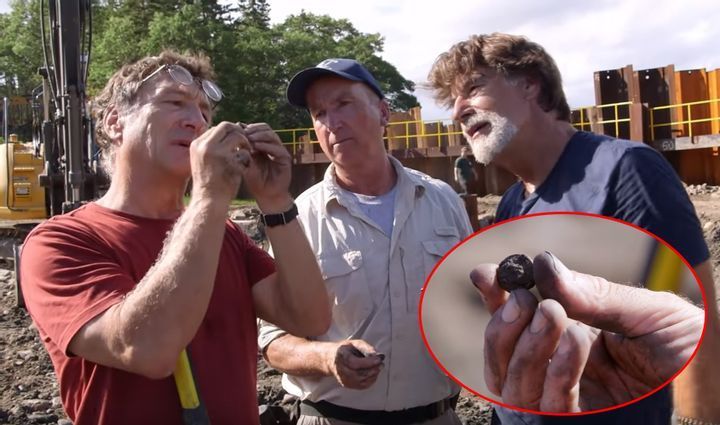
… U-shaped structure beneath the mud and sludge, and after sifting through the wreckage with metal detectors, they discovered something they’d been looking for for years: a gold-colored coin. While the coin needs to be cleaned and analyzed carefully, preliminary microscopy suggests it dates to the early 1700s, putting it precisely around the time when Oak Island’s treasures were buried.
The Flood Tunnels Discovery
In the last two seasons of The Curse of Oak Island, there have been many ups and downs and some exciting discoveries. The excavation crew continues to unearth exciting items, but during Season 7, one of the main focuses was on a possible tunnel discovery.
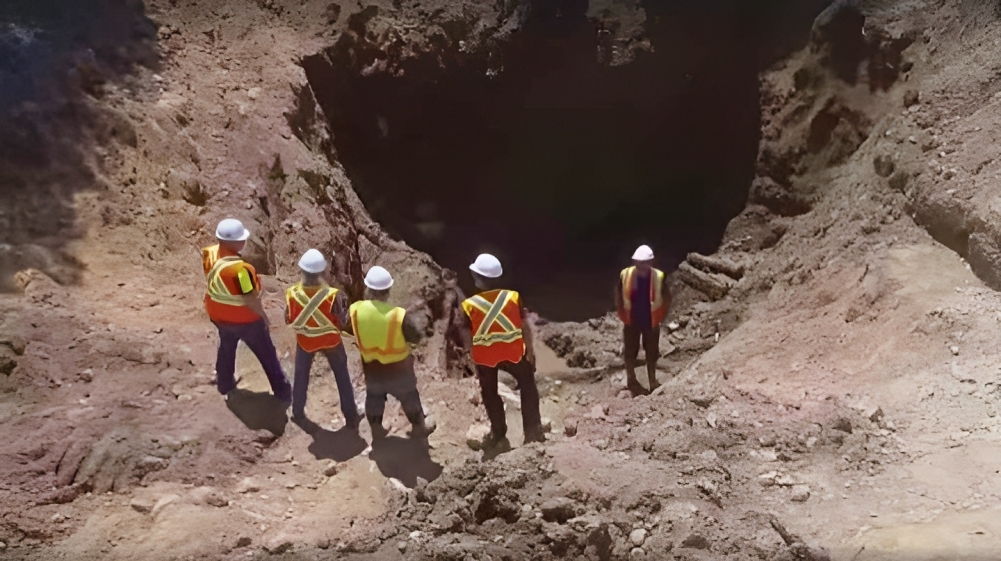
It was deemed as the next most significant clue to confirming whether the legend of Oak Island’s treasure is true or not is a flood tunnel to the Money Pit. But, alas, they seemed to be hitting dead ends until the end of 2020.
The Latest, Most Exciting Discoveries
There were a few setbacks when it came to finding tunnels in 2019. However, by the time Season 8 aired in the last months of 2020, the crew appeared to have unearthed and recovered even more relics, making them feel they were one step closer to discovering the legendary treasure.
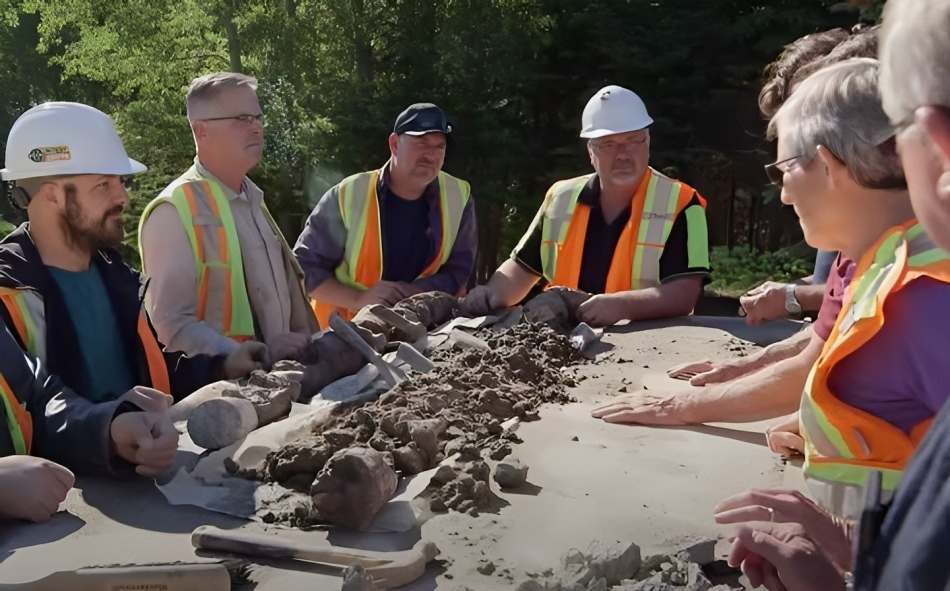
They dug out a possible ship’s slipway to transfer cargo, which could allude to a potential treasure discovery, sand instead of dirt indicating a human-made flood tunnel, and equipment from millennia ago, such as keys and nails. Maybe they’ll finally uncover the treasure this year!
